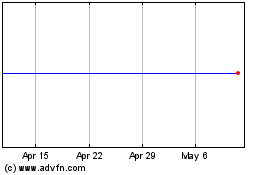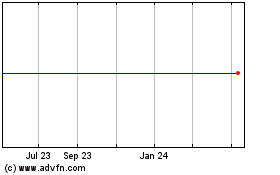OUTLOOK
Crude Oil
Mounting worries about Europe's debt crisis, a persistently weak
U.S. jobs market and less-than-encouraging guidance from the
Federal Reserve have been weighing on investor sentiment, weakening
oil prices to around $85 a barrel.
Apprehensions about high U.S. crude stocks, the release of
emergency oil supplies from government-held strategic reserves into
the world market, and uncertainty over oil supply disruptions in
the Middle East have added to the negative sentiment.
These issues have stoked fears about the demand outlook for oil
that has seen the commodity’s price plummet to 12-month lows
earlier in the month. Incidentally, crude prices zoomed past the
$110 per barrel level during the first half of the year.
As per the latest release by the Energy Information Administration
(EIA), which provides official energy statistics from the U.S.
Government, crude supplies are still in the upper limit of the
average for this time of the year. This has led to domestic demand
concerns against a backdrop of continued weak job growth.
But while the Western economies exhibit sluggish growth prospects,
global oil consumption is expected to get a boost from the
sustained strength in the major emerging powers like India and
China that continue to grow at a healthy rate.
As such, crude oil’s near-term fundamentals remain patchy, to say
the least. The long-term outlook for oil, however, remains
favorable given the commodity’s constrained supply picture.
According to the EIA, world crude consumption grew by more than 2
million barrels per day in 2010 to a record-high level of 87.1
million barrels per day, which more than made up for the losses of
the previous 2 years and surpassed the 2007 level of 86.3 million
barrels per day (reached prior to the economic downturn). One might
note that global demand for 2009 was below the 2008 level, which
itself was below the 2007 level -- the first time since the early
1980’s of two back-to-back negative growth years.
The agency, in its most recent Short-Term Energy Outlook, said that
it expects global oil demand growth of 1.3 million barrels per day
in 2011 and 1.4 million barrels per day in 2012. EIA’s latest
demand growth forecast for 2011 is 50,000 barrels per day lower
than in the earlier version, as the agency sees declining
consumption in developed countries. But for 2012, EIA has raised
its global oil demand forecast by the same amount, stressing on
robustness in China and other emerging economies.
Recently, the Organization of the Petroleum Exporting Countries
(OPEC) -- which supplies around 40% of the world's crude -- trimmed
its 2011 and 2012 world oil demand growth outlooks, citing the
unsteady global market and in particular the worsening economic
outlook in the more developed countries. OPEC predicts that global
oil demand would increase by 880,000 barrels per day annually,
reaching 87.81 million barrels a day in 2011 from last year’s 86.93
million barrels a day.
OPEC’s current growth estimate for 2011 is lower by 180,000 barrels
a day from its last report, issued in September 2011. In 2012, OPEC
expects global oil demand to grow at a slightly higher 1.19 million
barrels per day. This reflects a downward revision of 80,000
barrels per day from the previous month’s report.
The third major energy consultative body, the Paris-based
International Energy Agency (IEA), the energy-monitoring body of 28
industrialized countries, also forecasted
weaker-than-previously-anticipated global oil demand growth in 2011
and 2012. In its latest ‘Oil Market Report,’ IEA said it expects
world oil demand to grow by 1.0 million barrels per day in 2011,
reflecting a downward revision of 50,000 barrels a day over the
previous assessment.
For 2012, the agency has curbed its estimate for world oil demand
growth by 210,000 barrels per day and now sees consumption to grow
by 1.3 million barrels per day. IEA has attributed the cuts in its
oil demand growth outlook to downward adjustment to global GDP
growth assumptions.
We expect crude oil to trade in the $85-$95 per barrel range in the
near future, reflecting upward pressure due to supply uncertainty
from the ongoing unrest in oil-producing regions and downward
pressure because of lower economic growth expectations.
Natural Gas
A supply glut pressured natural gas futures for much of 2010, as
production from dense rock formations (shale) -- through novel
techniques of horizontal drilling and hydraulic fracturing --
remain robust, thereby overwhelming demand.
As per the U.S. Energy Department, domestic gas output increased
significantly in 2010, by an estimated 2.4 billion cubic feet per
day, or 4.1%, as production declines in Alaska and the Gulf of
Mexico were offset by a healthy increase in lower-48 onshore
volumes. Storage amounts hit a record high of 3.840 trillion cubic
feet in November, while gas prices during the year fell 21%.
However, stocks of the commodity slid approximately 2.261 Tcf
during the five-month period (November 5, 2010 to April 1, 2011) on
the back of a colder-than-normal end to this past winter,
production freeze-offs in January/February, and the steadily
declining rig count.
These factors cut into the U.S. supply overhang, thereby creating a
deficit in natural gas inventories after erasing the hefty surplus
over last year’s inventory level and the five-year average
level.
However, natural gas demand is currently going through a lean
period with the end of the peak cooling loads for summer and ahead
of the winter heating season, coupled with tepid industrial demand
in a weak economy.
Looking ahead, EIA expects average total production to rise by 6.7%
in 2011 and by 2.1% in 2012, while total natural gas consumption is
anticipated to grow by 1.9% this year and by a marginal 0.7% during
the next year.
We believe these supply/demand dynamics -- the projected lower
production growth and almost flat consumption -- will lead to the
strengthening of natural gas prices in 2012.
But until then the weak fundamentals are going to continue to weigh
on natural gas prices, translating into limited upside for natural
gas-weighted companies and related support plays.
OPPORTUNITIES
We are positive on Norway-based major international integrated oil
and gas producer
Statoil ASA (STO). The company
has operations in all major hydrocarbon-producing regions of the
world, with an emphasis on the Norwegian Continental Shelf
(NCS).
We believe that Statoil is well positioned to sustain its steady
production growth for the next few years on the back of its large
resource base at NCS. We also believe that the growing share of
natural gas in the company’s NCS volume mix and its extensive
interests in infrastructure assets enable it to play a leading role
in the European natural gas market.
Within the oilfield services group, we like
Core
Laboratories N.V. (CLB). We are a fan of Core Labs’
leadership position in the reservoir optimization niche, along with
its global footprint and deep portfolio of proprietary products and
services. Furthermore, the company’s low asset intensive operations
and limited capex needs allow it to generate substantial free cash
flows.
Baker Hughes Inc. (BHI), the world’s third-largest
oil services firm after
Schlumberger Ltd. (SLB)
and
Halliburton Co. (HAL), is also a top pick. We
like Baker Hughes’ leading position in the global oilfield services
market, along with its broad and technologically-complex product
and service offerings.
We believe Baker Hughes is well positioned to gain from two
positive aspects having positive influences on the global oil
service business. The first is a structural shift in North America
mainly benefiting from the integration of BJ Services business, and
the other is an international turnaround that is in its early
stages.
Among the oil drilling equipment makers, we are particularly
bullish on
FMC Technologies Inc. (FTI) and
Cameron International Corp. (CAM). We believe both
the companies are well positioned going forward given their
dominant market share, technology leadership, efficient execution
skills and strong backlog position.
The increase in North American drilling activity, along with
potential opportunities from the industry complying with new
pressure control equipment rules, has added to this bullish
sentiment. Furthermore, we believe that FMC Technologies and
Cameron are poised to benefit from the improving subsea activity
levels through 2011.
Onshore contract driller
Patterson-UTI Energy Inc.
(PTEN) is also worth a look, reflecting strong demand for its
services in North America. The company has been benefiting from
increased activity in the unconventional oil and liquids-rich plays
in the region, which have more than made up for the soft natural
gas fundamentals.
We believe Patterson-UTI’s earnings will continue to push higher,
benefiting from its growing premium land rig fleet and the current
boom in pressure pumping services. Additionally, the company’s
stellar financial health (free cash flow positive and a debt-free
balance sheet) stands it in good stead.
Buoyed by the favorable trends in the refining sector, we are more
optimistic on the industry than we were 12 months ago. Uptick in
economic activity overseas (mainly in China and India) and
prospects for higher fuel demand in the U.S. are likely to push
2011 industry margins higher than last year’s levels. Against this
backdrop, we are particularly bullish on Valero Energy Corp (VLO),
Tesoro Corp (TSO) and
Western Refining
Inc. (WNR).
WEAKNESSES
The current turbulent market environment -- characterized by the
decline in short-term demand assumptions on the back of recession
fears in the U.S. and EU and high uncertainty -- have taken its
toll on the energy conglomerate business structures of the
large-cap integrateds. As a result, we are bearish on
Eni
SpA (E),
Royal Dutch Shell plc (RDS.A)
and
TOTAL SA (TOT). The dip in oil prices to
around $80 per barrel is likely to further limit their ability to
generate positive earnings surprises.
Onshore contract driller
Helmerich & Payne
(HP) is another company we would like to avoid for the time being,
mainly due to the weak natural gas fundamentals. Helmerich &
Payne, which specializes in shallow to deep drilling in gas
producing basins of the U.S., remains particularly exposed to this
situation.
We are also skeptical on Canadian independent oil and gas producers
like
Nexen Inc. (NXY) and
Canadian Natural
Resources Ltd. (CNQ). In particular, the recent steep drop
in crude oil prices may render the oil sands mining initiatives as
economically unviable considering the high up-front costs required
for their development. In this case, companies may have to call off
or postpone projects under construction.
Lastly, we expect shares of independent gas-focused exploration and
production firms such as
Devon Energy Corp. (DVN),
Forest Oil Corp. (FST),
Cabot Oil and
Gas (COG), etc. to be under pressure in the near
future.
These companies’ high natural gas exposure raises their sensitivity
to gas price fluctuations, compared to the more-diversified
independent peers with a balanced oil/gas production profile.
Continued low natural gas prices have created a difficult operating
environment for the firms.
BAKER-HUGHES (BHI): Free Stock Analysis Report
CAMERON INTL (CAM): Free Stock Analysis Report
CORE LABS NV (CLB): Free Stock Analysis Report
ENI SPA-ADR (E): Free Stock Analysis Report
FOREST OIL CORP (FST): Free Stock Analysis Report
FMC TECH INC (FTI): Free Stock Analysis Report
HALLIBURTON CO (HAL): Free Stock Analysis Report
HELMERICH&PAYNE (HP): Free Stock Analysis Report
NEXEN INC (NXY): Free Stock Analysis Report
PATTERSON-UTI (PTEN): Free Stock Analysis Report
ROYAL DTCH SH-A (RDS.A): Free Stock Analysis Report
SCHLUMBERGER LT (SLB): Free Stock Analysis Report
STATOIL ASA-ADR (STO): Free Stock Analysis Report
TOTAL FINA SA (TOT): Free Stock Analysis Report
TESORO CORP (TSO): Free Stock Analysis Report
WESTERN REFING (WNR): Free Stock Analysis Report
Zacks Investment Research
Cooper Cameron (NYSE:CAM)
Historical Stock Chart
From Jun 2024 to Jul 2024

Cooper Cameron (NYSE:CAM)
Historical Stock Chart
From Jul 2023 to Jul 2024
